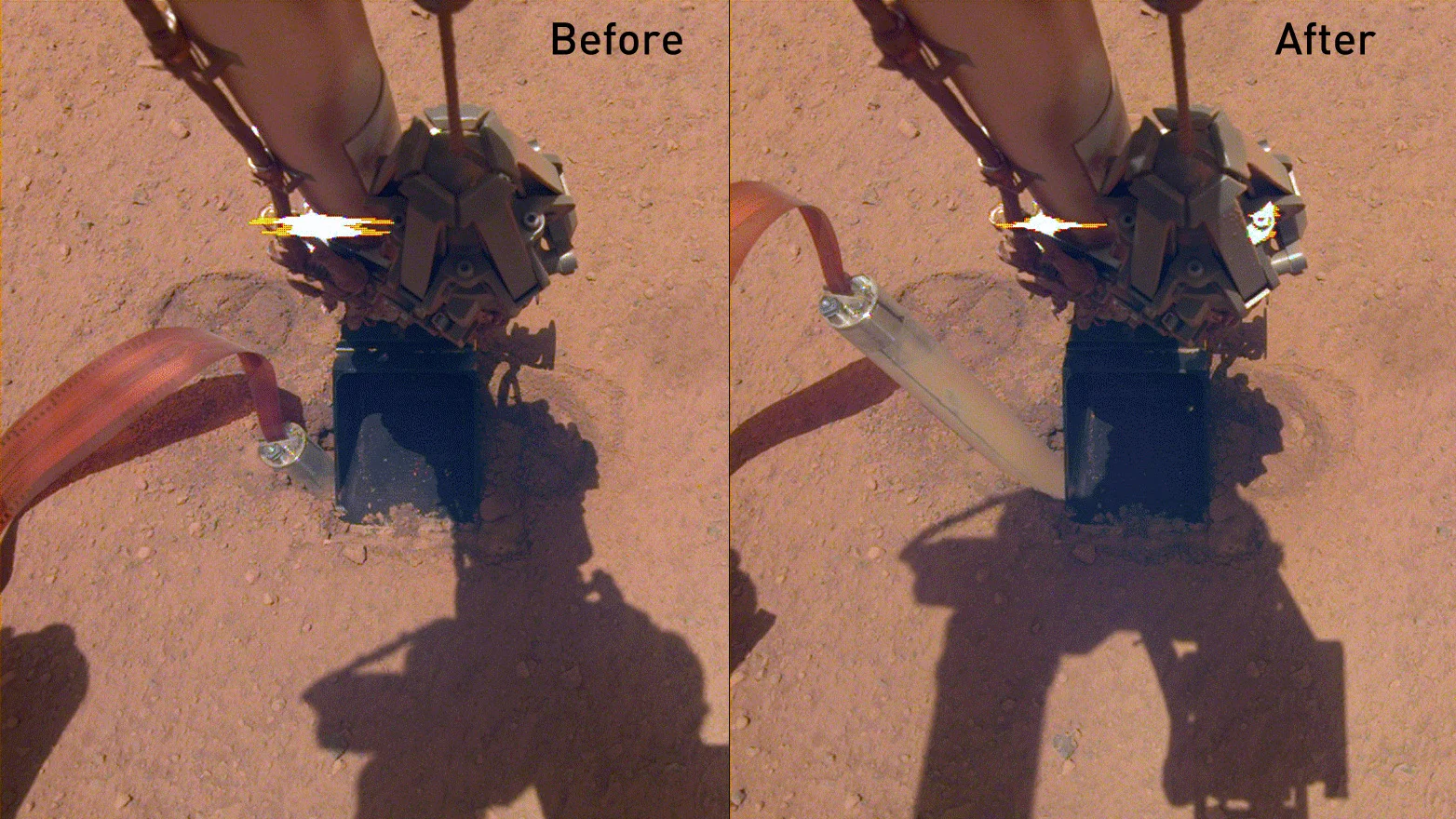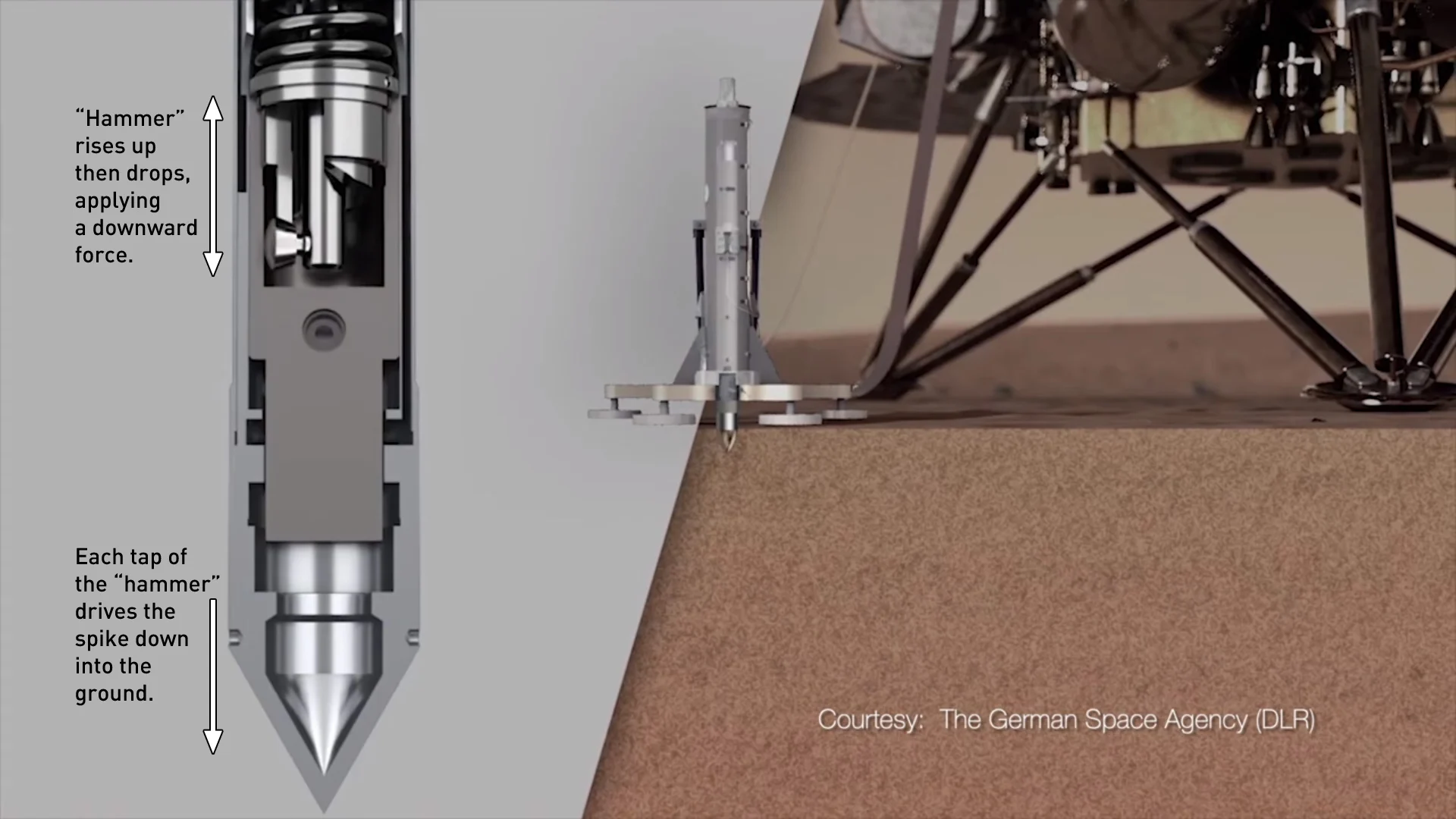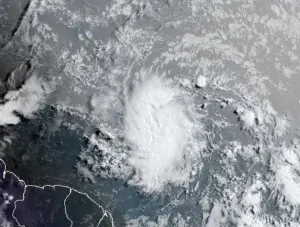
NASA InSight suffers setback as 'mole' partially climbs back out of its hole
Well, this is not good
UPDATE: Although the 'mole' probe on NASA's InSight lander did make some much-needed progress early last week, over the weekend things took a dramatic turn for the worse.
As reported on the NASA website on Sunday: "After making progress over the past several weeks digging into the surface of Mars, InSight's mole has backed about halfway out of its hole this past weekend. Preliminary assessments point to unusual soil conditions on the Red Planet. The international mission team is developing the next steps to get it buried again.
A scoop on the end of the arm has been used in recent weeks to "pin" the mole against the wall of its hole, providing friction it needs to dig. The next step is determining how safe it is to move InSight's robotic arm away from the mole to better assess the situation. The team continues to look at the data and will formulate a plan in the next few days."
Tilman Spohn, the leader of the 'mole' team at the Germany Aerospace Center (DLR) wrote in his blog that this 'backing out' may have had something to do with the low atmospheric pressure on Mars. He said that during testing on Earth, if the mole rebounded after it hammered down, a small gap would open up below the point of the mole, but the pressure of Earth's atmosphere would cause a suction effect in that gap, that would limit how high the mole rebounded. On Mars, with its very low atmospheric pressure, any suction effect would be very weak, so the rebound would be higher.
In this case, it may be that each time the mole hammered down during this attempt, it rebounded, leaving a gap, and the sides of the hole collapsed to fill that gap. Then, as it hammered down again, it rebounded again, higher, and the sides once again collapse in, forcing the mole to climb higher and higher.
"What to do next?" Spohn wrote. "First, we want to be sure that the Mole will not tip over. Then, we want to inspect the hole it is sitting in, the view of which is blocked by the scoop. We may then do another pinning trying to bring the Mole back to where it was before the recent hammering. And start again to get it to dig below the surface. But give us some time to think!"
The original story, published on October 22, continues below.
NASA appears to have finally solved the problem of its stuck 'mole', using a creative 'life hack'.
"The mole still has a way to go, but we're all thrilled to see it digging again," said Troy Hudson, who has led the Jet Propulsion Laboratory's recovery efforts for the InSight lander's Heat Flow and Physical Properties Package, which is nicknamed 'the mole'.
"When we first encountered this problem, it was crushing," Hudson said in a NASA press release. "But I thought, 'Maybe there's a chance; let's keep pressing on.' And right now, I'm feeling giddy."
After NASA's Insight lander touched down on the surface of Mars back in November 2018, it began its primary mission of determining what the interior of Mars looks like.
One of the instruments the robot is using to complete this mission is the Heat Flow and Physical Properties Package, or HP³. Designed to tap its way down to around 5 metres below the surface, it will trail temperatures sensors behind it that scientists will use to determine how hot the interior of the planet still is. Using that, they can figure out more about the evolution of the planet and its interior structure.
There was a problem, however. When HP³ deployed in February 2019, it only got down about 30 centimetres below the surface before it just stopped. With only a few centimetres of the mole sticking up above the ground, no matter what the German Aerospace Center (DLR) and NASA teams did to get the probe unstuck, it wouldn't go any deeper. Instead, it just carved out a wider hole around it, as it bounced in place.
The team determined that there was either one of two problems going on here - the probe had encountered a rock that was far larger than they had used in their testing, or the probe wasn't getting enough friction to function properly.
If it was the first problem, they were likely permanently stuck, so they focused their efforts on solving the second possibility.
The way the mole operates is by an internal mechanism that raises a hammer up and then drops it, driving the spike at the bottom of the probe further into the ground, tap by tap. With Mars' low gravity and very low atmospheric pressure, however, the design team found that, without sufficient friction on the sides of the probe, each time it tapped downwards, it would simply rebound off the soil beneath it, cancelling out its forward momentum.

The operation of "the mole". Credit: DLR/NASA/Scott Sutherland
With the graininess of the Martian top-soil, and given how the probe cleared out a gap around itself as it initially tried to get unstuck, it was a fairly reasonable guess that the lack of friction was the problem.
Given the unusual crust that formed the ground under InSight, they found that collapsing the hole around the probe wasn't possible. This was mainly due to the fact that the arm had to be fully extended to reach the hole, so it lacked any significant strength to push on the ground.
Instead, they decided to provide some of their own friction.
First, they used the scoop to drag some of the topsoil into the hole. Then, they had the lander push the scoop against the side of the probe, to pin it against the side of the hole.
Much to their relief, it worked!
"Seeing the mole's progress seems to indicate that there's no rock blocking our path," Tilman Spohn of DLR, who is the HP3 Principal Investigator, told NASA. "That's great news! We're rooting for our mole to keep going."
The mole has made some progress now, and hopefully it will continue to tap down, without any further problems.
If it, again, gets hung up by a lack of friction, once it clears the side of the scoop, NASA says that they may attempt to push directly down on the top of the probe, using the lip of the scoop. This would be a risky maneuver, as any unintentional slip-up could damage or even sever the tether that trails behind the mole.
Given the alternative though - abandoning this part of the mission as a failure - it would probably be worth the risk.










